
Have You Ever Wanted to Form a Band or Direct an Artistic Project?
Join this workshop to learn about the do's and don'ts from the renowned Chelsea Green.
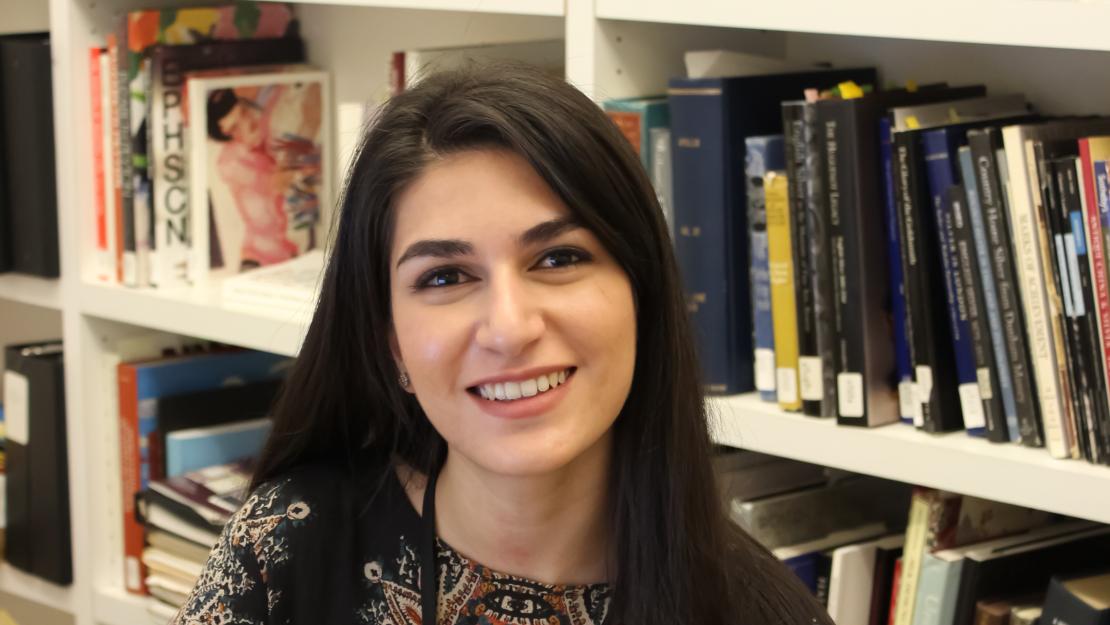
“Many of my mentors back in the United States wanted me to work with Bernard O’Kane, professor of Islamic art and architecture in AUC’s Department of Arab and Islamic Civilizations because he is one of the most distinguished scholars in this field,” recounted Mai Mohamed Kolkailah ’21 on what made her join AUC.
At that time, Kolkailah was a Mellon Undergraduate Curatorial Fellow at the Museum of Fine Arts in Houston prior to pursuing her graduate studies.
After immersing herself in the Art of the Islamic Worlds Department there and working with several other museums in the field, she wanted to specialize in Islamic art and architecture due to the “significant lack of diversity within the curatorial teams” she recognized. Her curatorial supervisor highly recommended AUC’s program. Later, she indeed joined the University and received the Nadia Niazi Mostafa Endowed Fellowship in Islamic Art and Architecture.
“The deficit of Arabic expertise among Islamic art specialists at museums is primarily what motivated me to focus on this field,” said Kolkailah. “In our increasingly geopolitical world where Islam is often misrepresented and thus misunderstood, I realize my role as an Arab American, Muslim woman in dismantling cultural stereotypes and presenting Islamic art within contexts that elucidate nuanced understandings of the Islamic culture.”
Kolkailah’s goal is to become a scholar and curator of Islamic art and architecture, hoping to publish her graduate research and obtain her PhD in the next few years. “AUC’s program not only gave me the specialized Islamic art training necessary for that but also provided me with the platform opportunities and academic credibility I needed to achieve my goals,” she asserted.
Indeed, two of her favorite courses turned out to be those by Professor O’Kane, namely Decorative Arts and Art of the Book, attributed to the wealth of information she acquired about Islamic art as opposed to just architecture.
“I feel like all my favorite moments at AUC happened, thanks to Professor O’Kane, from our adventures on field trips visiting Islamic architecture to our intriguing debates in class, his library assignments that felt like scavenger hunts for books, and, last but not least, joining the admirable initiative of publishing on Wikipedia for our final papers,” narrated Kolkailah. “Quite frankly, my graduate school experience would have been average if it wasn’t for his mentorship.”
Yet Kolkailah emphasized that “one of the perks of finally doing what you love is that you find most, if not all, of the courses you take are interesting.”
She recalled a particular course, Hadith, led by Ahmed Khan, assistant professor in the Department of Arab and Islamic Civilizations. “The class was outside of my specialty, and I took it as an elective. I was out of my depth, to say the least,” she reflected. “The challenge of catching up and the pressure of going head-to-head with graduates specializing in Islamic studies is precisely why this seminar resonated with me. The knowledge I gained from Professor Khan definitely honed my understanding of Islamic material culture.”
And on that note, just like the course was unexpectedly one of her memorable ones, Kolkailah concluded that “life doesn’t always play out according to the scenarios we plan,” emphasizing that “whichever way my professional and academic journey unfolds, I hope to make my mentors and department proud as a token of my appreciation for the knowledge, time and effort they have invested in me.”
One particular thing she’s grateful for is how supportive her department was when her father passed away. "I am grateful to all my professors for trying to reach out and sharing words of comfort,” she stressed. “My father was an extraordinary man, and I would not have become the woman I am proud to be today if it wasn’t for him.”

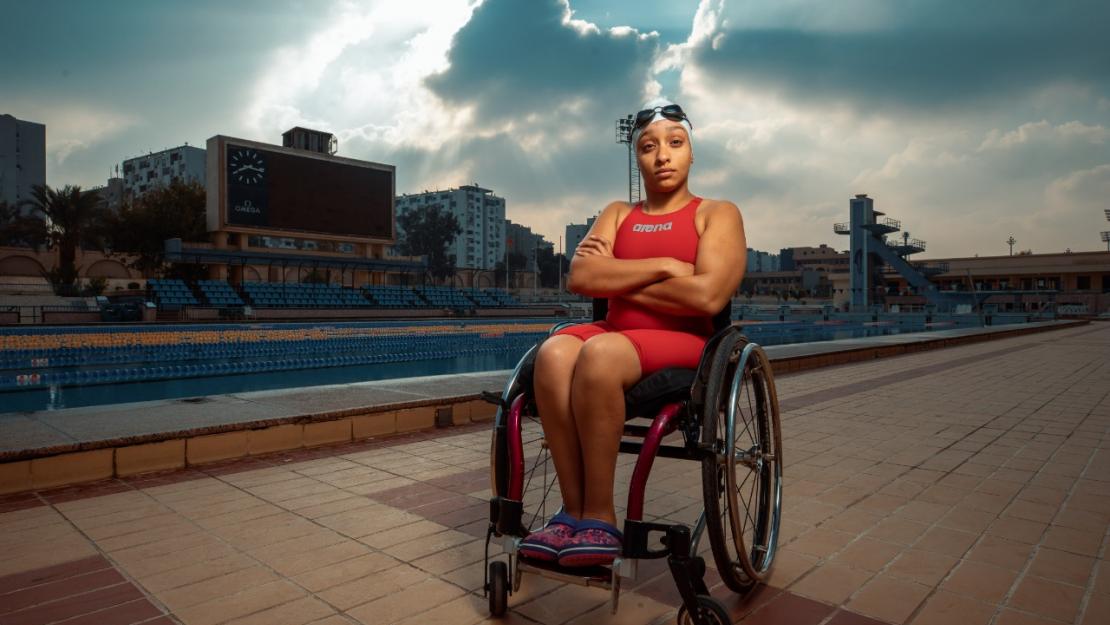
“Doctors told my mom I was going to die. They told her not to invest too much in me as I am dying anyway,” said Aya Abbas, the first and youngest paralympic swimmer in the Middle East and Africa to win world paraswimming championship medals as well as Egypt's Republican Medal for Athletes.
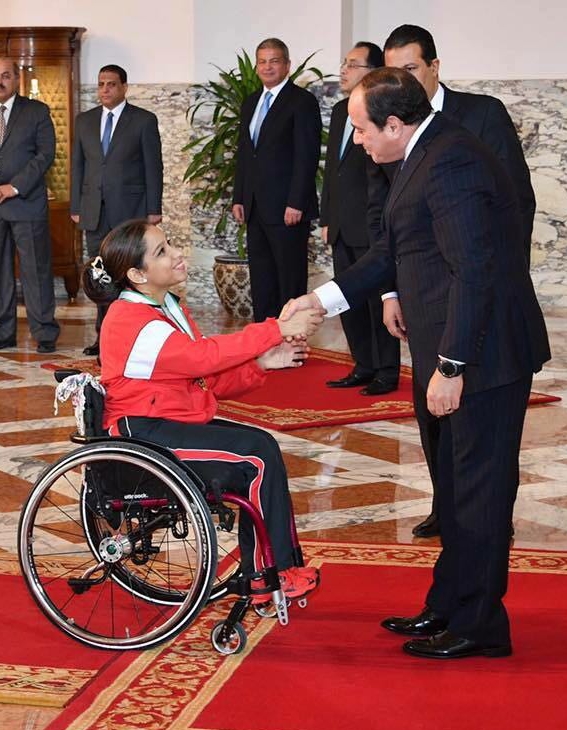
Abbas and her family never took no for an answer. With her family’s support, Abbas challenged herself to become the first and youngest Paralympic swimmer participating in the Rio 2016 Paralympics and is now preparing for the Tokyo Olympics, which have been postponed to August 2021 due to the coronavirus pandemic.
“It’s all due to my mom’s support, who never left my side during trips and training. My family, friends and coaches have also supported me throughout the way. Without their continuous support, I wouldn’t have been who I am today. I owe them everything,” said the journalism and mass communication sophomore who is double minoring in business administration and theatre at AUC.
Abbas’s journey started in 2006 by joining El Shams Club’s special needs team when it was first established. At the age of 8, she started competing in national championships and won Egypt's best swimmer cup for five consecutive years. At the age of 14, she joined the Egyptian Paralympic national team and became the first Arab and Egyptian female swimmer to win two world championship medals.
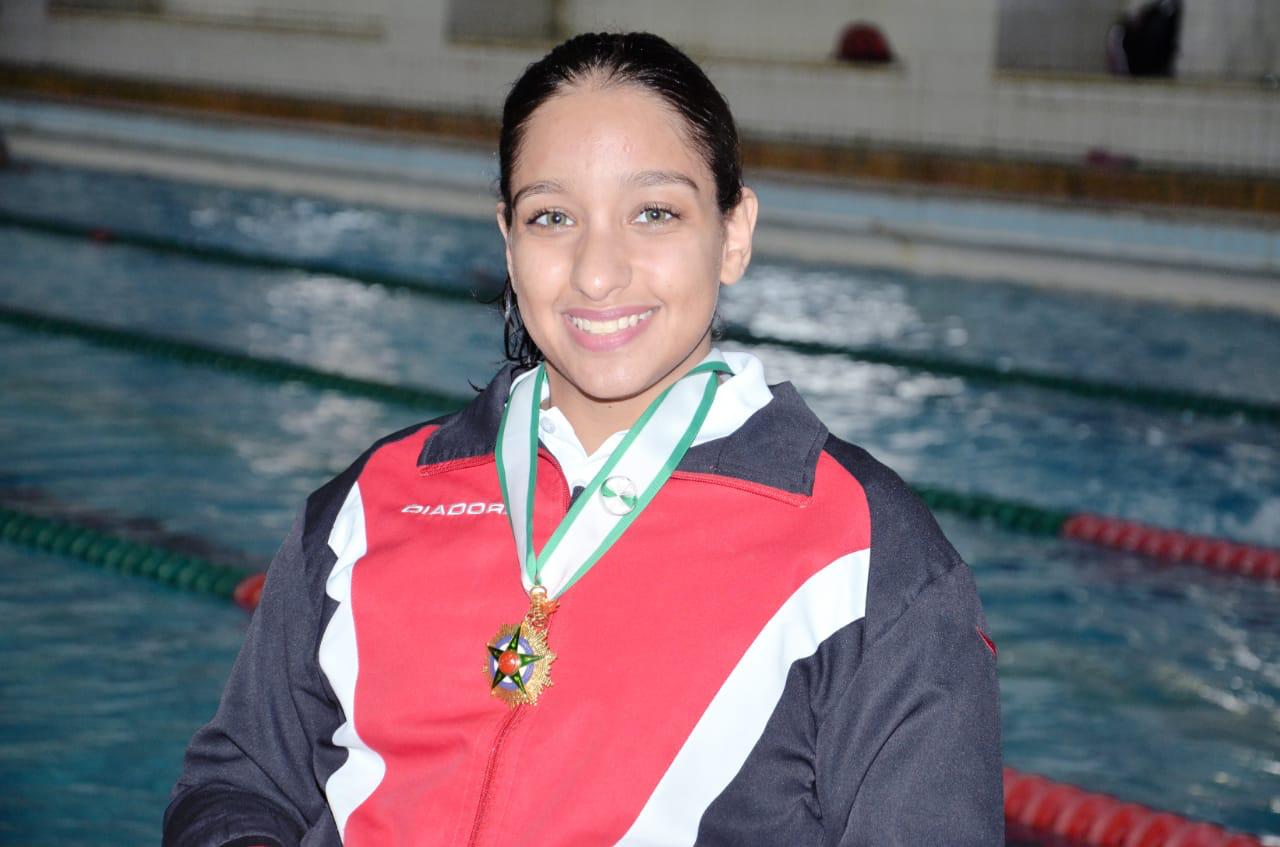
When she first joined AUC as a holder of the Athletic Scholarship — provided to a select number of students who participate in University-sponsored sports — she was mesmerized with the facilities offered to people with disabilities, “I am impressed with all facilities offered at AUC to make our lives better especially the Center for Student Well-Being — my go-to place on campus — that always works to support people with disabilities in all aspects. I really appreciate the campus accessibility to wheelchair users, which makes my life much easier," said Abbas, who regularly participates in swimming events held by AUC.
Besides swimming, Abbas is passionate about arts. Her dream is to work in acting, production and filmmaking to support people with disabilities and make their lives easier.
“I want to become the first wheelchair professional actress in Egypt,” she said. “I wish I could get into filmmaking, especially acting, and help people with disabilities stand in front of the camera to prove how good they can be as public speakers or directors. We can do anything.”
Abbas immediately minored in theatre and signed up for AUC's Theatre & Film Club to develop her love for acting and filmmaking. “The extracurricular activities at AUC are everything to me; they help us find our passion in different fields,” she affirmed. “I love the AUC Theater & Film Club and have a thing for theaters at AUC; the Malak Gabr Arts Theater and Bassily Auditorium. I’ve only taken one theatre course and one film course so far, but I always feel something special when I go there.”
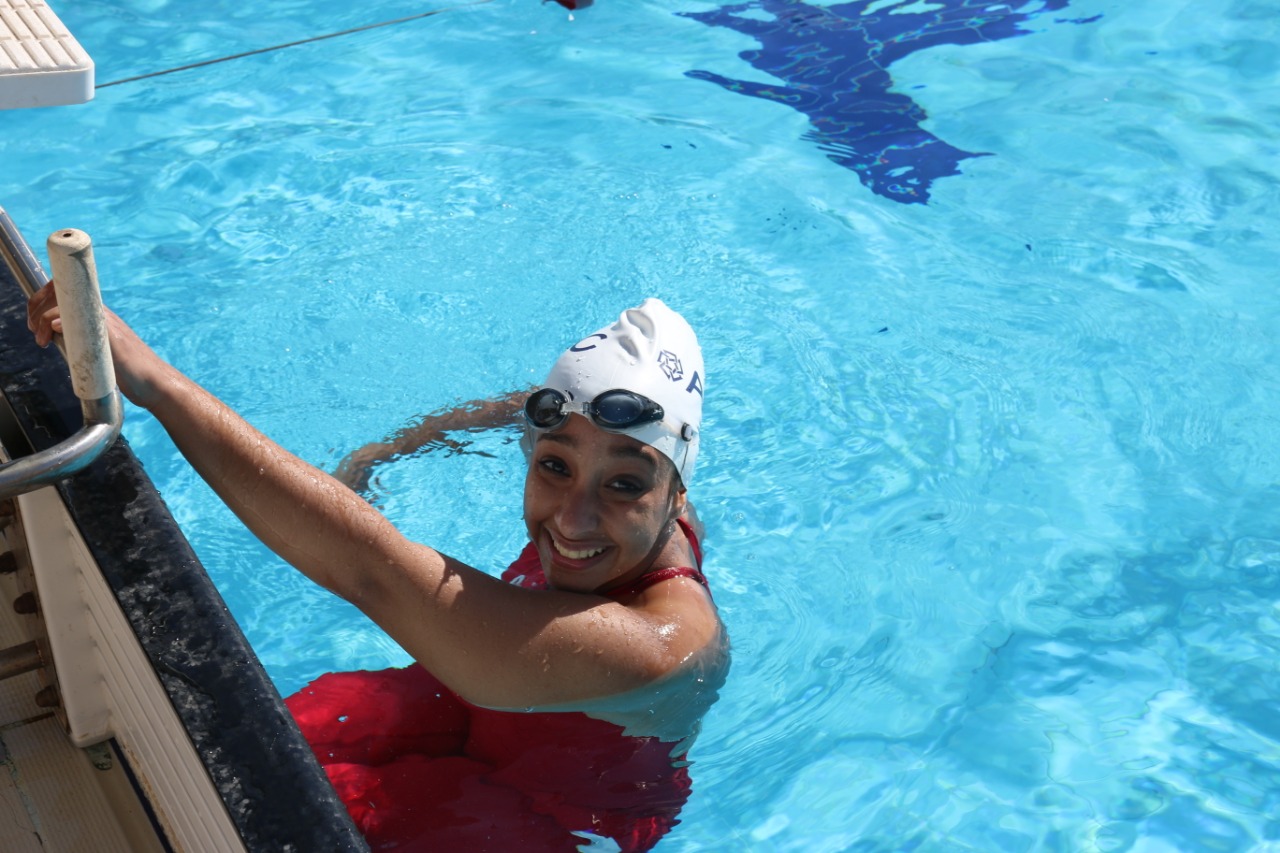
Abbas is so grateful for the University’s Athletic Scholarship that helped her study at AUC to find and support her passion for acting and major in marketing with the wide variety of activities offered on campus.
“My dream to study integrated marketing communication, theatre and business administration at AUC came true with the help of the Athletic Scholarship,” she said. “The scholarship gave me a chance to explore different activities on campus and discover my passion for acting by joining the AUC Theater & Film Club. ”
Abbas is now preparing for the Olympics. “I train almost twice every day; I have my swimming training everyday in the morning and at night, and I also have my fitness and yoga classes three times a week. Hopefully, when things get better after the pandemic, I’ll start traveling again to take part in international trials.”

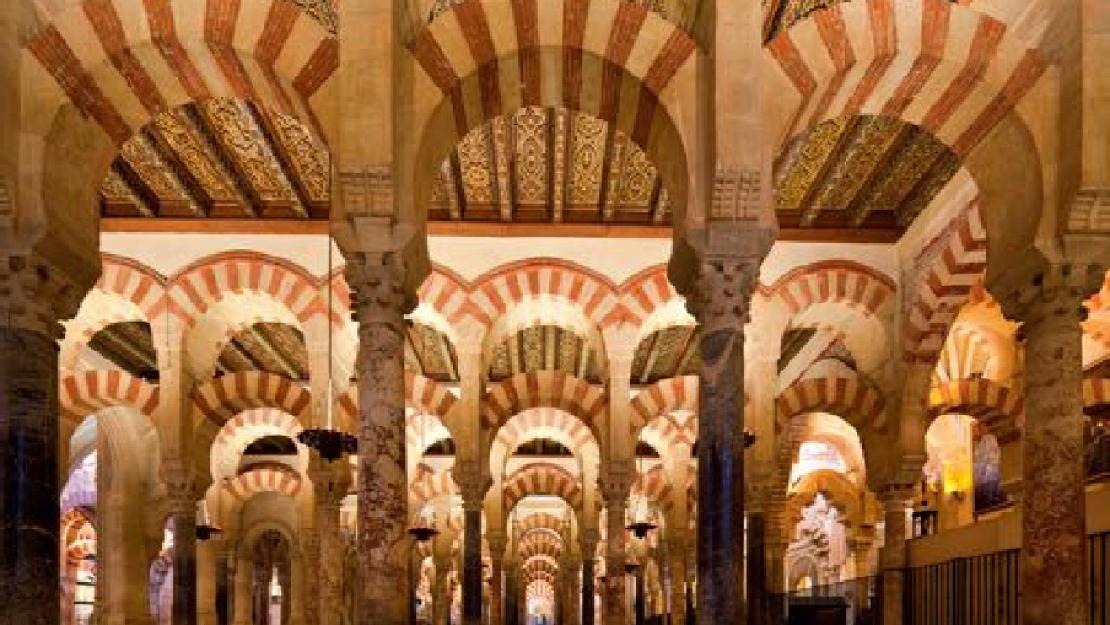
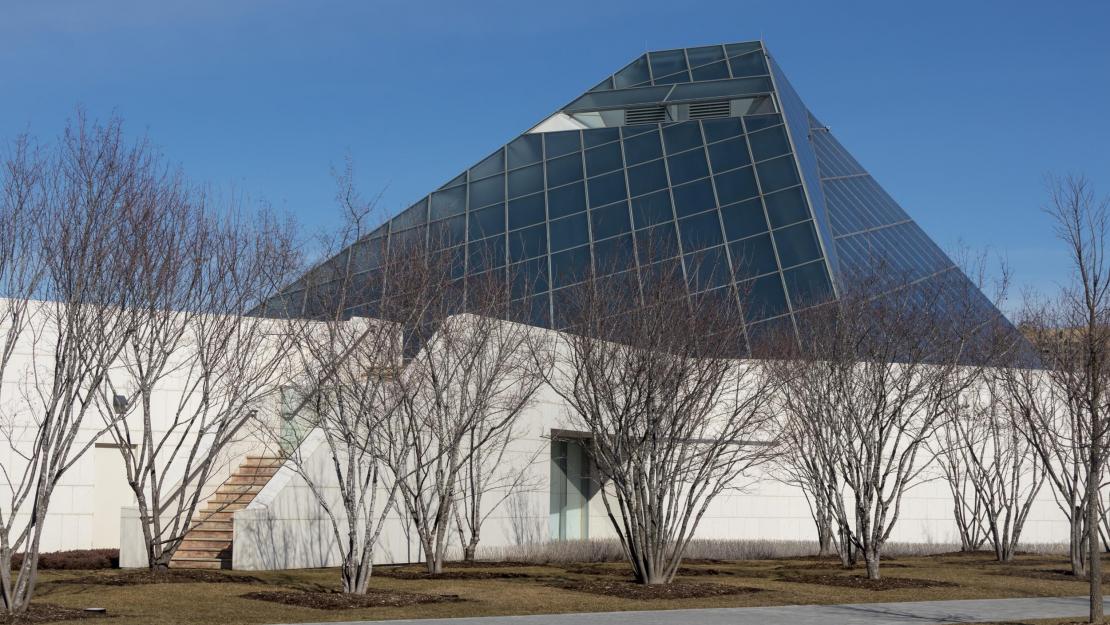
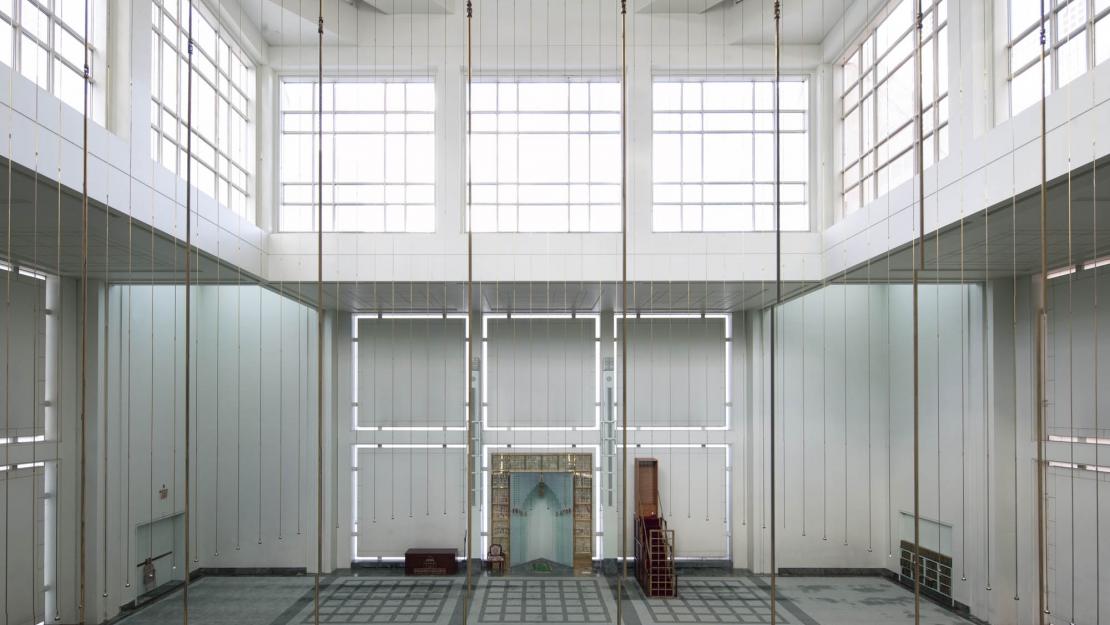
Bernard O'Kane, professor in the Department of Arab and Islamic Civilizations, has released his latest book Mosques: The 100 Most Iconic Islamic Houses of Worship, where he went on a journey through different centuries and continents to explore 100 of the most iconic and beautifully made architectural designs that are also meant to be home to worshippers in Islam.
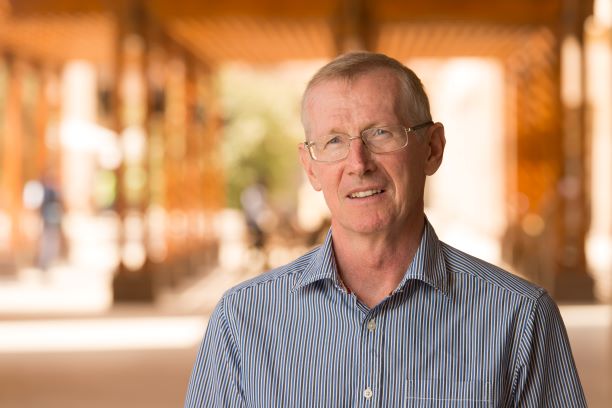
"The book is unusual in the field of Islamic art and architecture for the breadth of its coverage. Mosques from four continents are illustrated, from North America to Europe, Africa and Asia," said Bernard O'Kane, professor in the Department of Arab and Islamic Civilizations.
In the book, O'Kane looks at some of the most iconic mosques from Indonesia to Spain and identifies how they've become more than just places for prayer, but have also meant to represent great historical architectural and design achievements.
Speaking of golden iconic designs, O'Kane was also keen to highlight many of the mosques that date back to the golden age.
"Although those from the Arab, Turkish and Iranian heartlands receive the greatest attention, this breadth enables the reader to gain a fuller understanding of the worldwide distribution of mosques. In addition, more emphasis is placed than is usual on the 19th and 20th centuries, with 21 out of 100 from those centuries," added O'Kane.

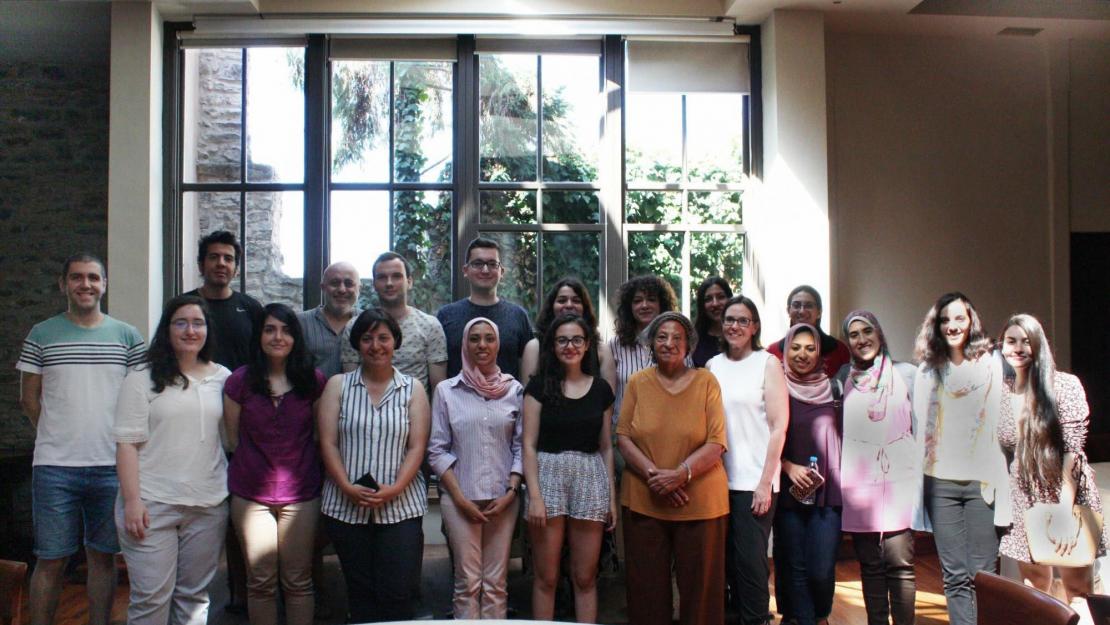
Eight graduate students from Koc and eight from AUC have attended a summer program in Kavala, Greece, the birthplace of Muhammad Ali Pasha, often referred to as the founder of modern Egypt. AUC students hailed from diverse specializations, including history, literature, Islamic studies and Islamic art and architecture, as well as Middle East studies.
The AUC students, guided by Distinguished University Professor Nelly Hanna, attended lectures and went on excursions, joined by students and faculty members from Koç University in Turkey.
The summer program, initiated by the Muhammed Ali Foundation, covered the architecture and history linked to the Muhammad Ali reign in the early 19th century. Muhammad Ali had founded a waqf in Kavala (part of Albania at the time). The waqf recently underwent major repair and is now in use. The summer school took place there.
"Exposure to other cultures is an important part of students' education, beyond what they learn in class," said Nelly Hanna, distinguished University professor in the Department of Arab and Islamic Civilizations. "This cooperation gives students the opportunity to meet and exchange on academic and on general subjects of common interest. For some, it may lead to further studies in the domains covered."
For the AUC graduate students, the trip was a memorable part of their learning experience. “The whole experience was certainly unforgettable." said Maha Shawki, a graduate student in the Department of Arab and Islamic Civilizations. "We had the opportunity to build a dialogue and exchange knowledge with Turkish students from Koç University. The classes were held at MOHA Research Center, the only Egyptian waqf property in Europe built by Mohamed Ali, which exposed us to the tangled history of Kavala, Greece and its relationship with the Ottoman Empire. Through the summer school, we learned how to interpret Mediterranean history through the city's monuments and its various layers. Finally, we were privileged to meet Prince Abbas Hilmi and hear about his views and opinions regarding the history and accomplishment of the royal family."

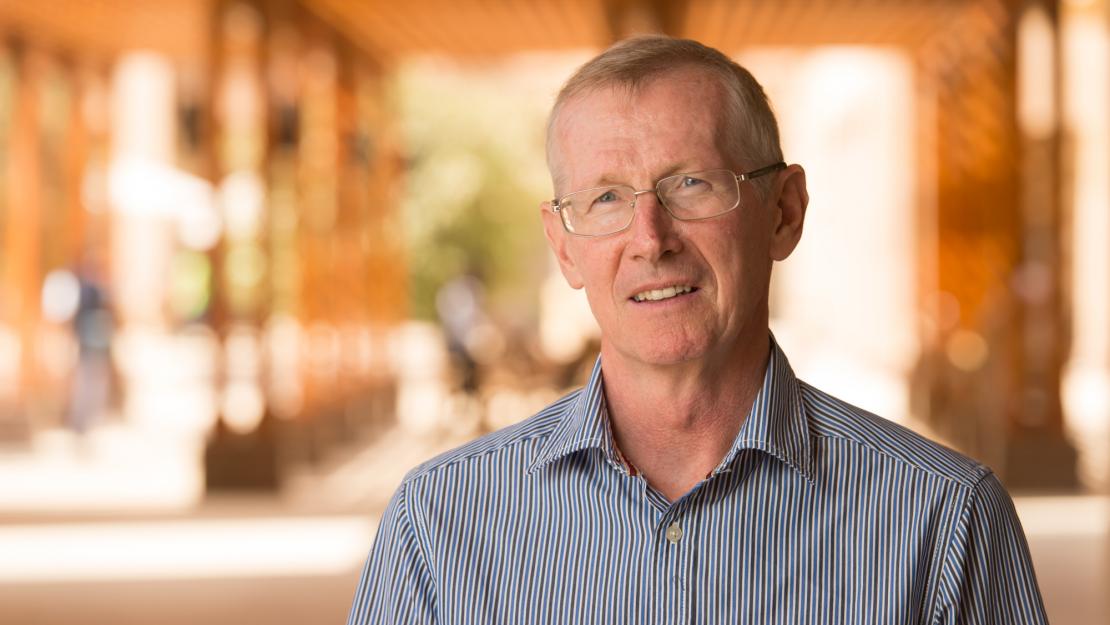
It was during his summer holidays as a student that Bernard O’Kane, now professor of Islamic art and architecture, took trips from Ireland to Turkey, Egypt, Iraq, Syria, Jordan, Lebanon and Iran -- and “was hooked.”
Recently, O’Kane won the ninth Farabi International Award, granted by the Ministry of Science, Research and Technology of the Islamic Republic of Iran for outstanding scholarship in Islamic humanities. Through publishing books, taking students on field trips and photography, O’Kane has, for the past – almost – 40 years at AUC, significantly contributed to the study of Islamic art and architecture.
Islamic Art: Past and Future
In November 2017, a project that O’Kane and graduate students worked on from 1997 to 2004 was finally made available online. As part of the project, funded by AUC and the American Research Center in Egypt, O'Kane and his team recorded all inscriptions on mosques in Egypt. The large team of students took trips to the mosques and photographed and documented the Arabic text with English translations. “It was delayed because, at the time, Arabic and English text did not work in the same field,” he explained. “But today, the Center for Documentation of Cultural and Natural Heritage is hosting it with the servers, and the data is available online for free. It’s a useful tool – not just for art historians, but for linguists and scholars of other fields as well.”
When it comes to working on projects with students, O’Kane says “there is no shortage of projects to work on.” In recent years, students have been more interested in modern Islamic architecture, he noted. “In our graduate program, we get architects and interior designers passing through who are among the people that can be very influential in this field,” he said. “We are hoping that they can learn to harmonize elements of cultural heritage and modernity in mosques – which hasn’t been easy to do anywhere in the Islamic world.”
In an effort to revitalize students’ creativity, O’Kane is commencing another project in collaboration with the Department of Architecture that aims to tackle the tough task of designing modern Islamic architecture. “We are hoping to give a joint course on designing modern mosques,” he mentioned. “I will be providing the historical context, and the other professor will be providing the studio part.”
Meanwhile, on an individual level, he is working on The Ultimate Book of Mosques, which he describes as a fun project that will require him to look more closely at modern mosque architecture. “I’ve been asked to pick 100 mosques and write captions and an introduction. It covers the entire Islamic world chronologically,” he stated. “So I will be balancing a little in terms of historic designs and what’s happening now with mosque architecture, which is fascinating, and has all sorts of possibilities.”
Why Cairo?
O’Kane, who originally studied law in the early 1970s, later switched to the field of art history, worked on his thesis in Iran and then came to Cairo in 1980 to join AUC’s Department of Arab and Islamic Civilization as an instructor. O’Kane believes that coming to Cairo for someone invested in the field of Islamic architecture is beneficial due to its location and the richness of its history. “A core part of the identity of Cairo’s Islamic architecture is that it has a larger chronological range than any other Islamic city, starting in the ninth century.” he reflected. “Mosques in Egypt have survived to an extraordinary extent, and Egypt is unique in the sense in which the capital city – Cairo – dominated over the other towns by getting more than usual in patronage from the rulers and the sultans – which is why we have this rich and extraordinary legacy.”
Another advantage for students learning an intricate and complex branch of art history such as Islamic architecture is studying in the historical city of Cairo, O’Kane affirms. “Cairo is in the middle of the Middle East, so we’re able to take students to see the original buildings, which is so much more enriching than being in a class and showing slides, for example,” he pointed out. “More than that, if I’m studying this field, being in Cairo means I can easily travel to other Islamic cities to further my studies.”
Moreover, Cairo’s Islamic art is distinct for its valuable stonework and inscriptions and what O’Kane describes as “some of the greatest masterpieces of world architecture” like the Ibn Tulun Mosque and the Complex of Sultan Hasan. “As mentioned, field trips are a wonderful way to introduce students to their cultural heritage, places they’ve never been to before, or that they never knew about,” O’Kane said. “Fortunately, the Museum of Islamic Art was recently reopened, containing masterpieces of art from around the Islamic world, now extremely well-displayed. It’s very exciting.”
O’Kane has immersed himself in the world of art history for the past few decades, keeping himself connected with scholars, writing significant books on the subject, such as The Mosques of Egypt, which includes 543 of his own photographs, serving as a visiting professor at Harvard and University of California, Berkeley, and being recognized for his research in the field. “Art is an enriching experience,” he concluded. “Whether it is music, literature, visual art or architecture. Studying it adds another dimension to life.”

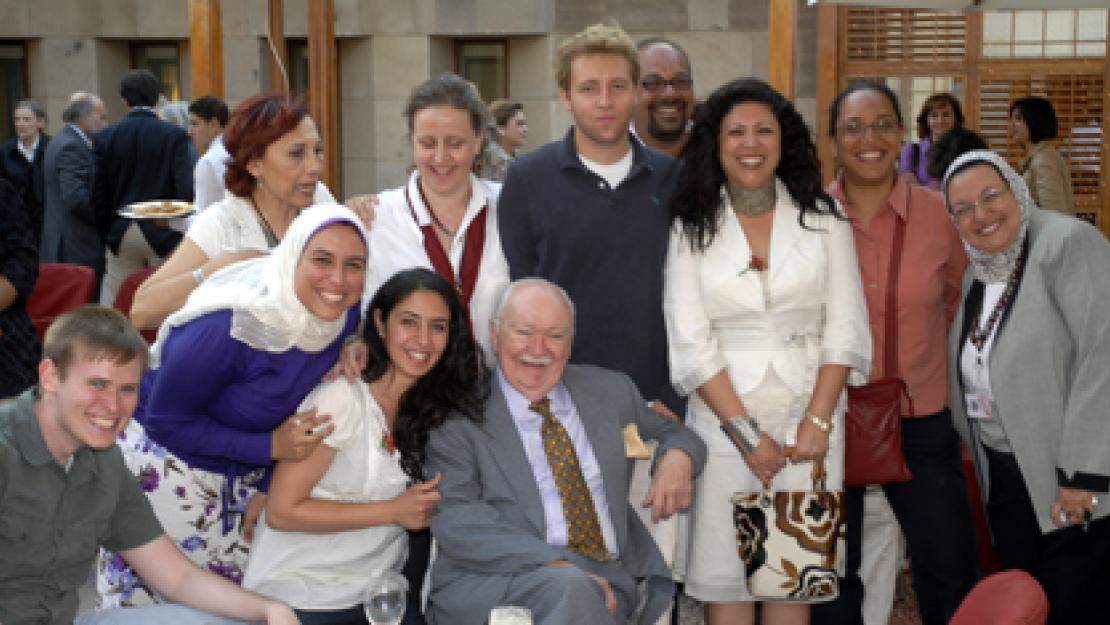
“When you think about Islamic archaeology and archaeology in Cairo, you think of George Scanlon,” noted one of Scanlon’s former students and archaeologist Gregory Williams (MA) ’13, who is currently pursuing a PhD in Islamic archaeology.
Professor emeritus in the Department of Arab and Islamic Civilizations (ARIC), the late George T. Scanlon (1925 - 2014) was a pillar in the ARIC department and AUC. He was fundamental in establishing the University’s program and curriculum in Oriental and Arabic and Islamic studies, especially within his field of Islamic art and architecture. Under his guidance, numerous generations of students have graduated and gone on to pursue successful careers in various corners of the globe.
Commemorating Scanlon’s great work in the field of Islamic art and architecture, his former students and AUC alumni decided to undertake an initiative to establish the George T. Scanlon Graduate Student Award in Arab and Islamic Civilizations, a merit-based award to recognize a distinguished MA thesis produced by an ARIC student in that given academic year.
“As we count ourselves among the privileged graduates who benefited from Scanlon’s dedication to his students and his multidisciplinary approach to the study of Islamic culture and history, we are committed to fortifying his most noble of characteristics by encouraging the research of future generations of historians following in the tradition that he helped establish at AUC,” wrote his former student Iman R. Abdulfattah (MA) ’04, PhD candidate at the University of Bonn and Islamic art historian at the Ministry of Antiquities, and Noha Abou-Khatwa ’98 ’01, PhD candidate at the University of Toronto and director of the Islamic Art Network, Thesaurus Islamicus Foundation, in their appeal to former students of Scanlon. The George T. Scanlon Graduate Student Award in Arab and Islamic Civilizations has so far raised more than $25,000.
Scanlon’s former students want to ensure that their mentor and dear professor’s name, memory and scholarly contributions are kept alive and thriving for years to come at AUC. “Such a prize recognizes Scanlon’s multidisciplinary approach to his various areas of expertise, but also ensures that he continues to be recognized in posterity for his manifold scholarly contributions,” said Abdulfattah. “It also shows a commitment to students, which was one of Scanlon’s most admiring attributes as an educator.”
Pioneering professors and mentors are an important part of AUC’s legacy. Faculty members like Scanlon made Cairo their home and AUC their family. Commemorating scholars like Scanlon through named gifts and prizes is one way of keeping their names alive. “Much like the medieval waqf system, which Scanlon taught us, kept the memories of past rulers and sultans alive on buildings and material objects they patronized; named prizes are another way of immortalizing our mentors, through a perpetual academic and intellectual lineage,” said Amina Elbendary ’96, ’00, Scanlon’s former student and associate chair and assistant professor of Arab and Islamic civilizations at AUC.
Scanlon’s 50-year teaching career at AUC has made an immense impact on all his students, scholars, fellow colleagues and researchers, and everyone who even encountered him briefly. He is remembered by his students as “opinionated, a wonderful teacher, great scholar who was incredibly generous and genuinely interested in his students” said Abdulfattah.
Building on from the work of the very famous K.A.C Creswell, Scanlon established a strong program in Islamic art and architecture at AUC. Several of his former students went on to become important scholars in the field. The theses they produced for their master’s degrees remain important works, which created a very strong reputation for AUC and the ARIC program. “Scanlon was one of the earliest scholars to bring archeology to Islamic studies. So, unlike Egyptology, Arabists were not traditionally trained to work with material culture much less to pursue archaeological work. He was a pioneer at that, and several of his students trained with him on site,” added Elbendary.
Scanlon made learning at AUC more exciting and his love of Cairo, its monuments and history was contagious. “His impact was immense on steering interest to Islamic archeology in Egypt,” said Abou-Khatwa. “His analysis of what he excavated was brilliant and this is why it is indispensable to the study of medieval Egypt, as it filled in a lot of blanks. Most importantly his work documented and thus preserved for us the first Muslim city.”
Scanlon’s main life achievement was teaching and his relationship with students. “We want to keep that link with students going … as he used to say, ‘Keep the Faith.’”
Getting to Know Professor George T. Scanlon
Born in Pennsylvania on April 23, 1925, George T. Scanlon paved the way in areas as wide-ranging as salvage archaeology and scholarly writing. Throughout his career, he has been affiliated with several academic institutions in the U.S. and the UK including Princeton University, the University of Chicago, the University of California at Berkeley, Harvard University, St. Anthony’s College in Oxford, the University of Michigan, and the American Research Center in Egypt (ARCE). He first joined AUC during the academic year 1957 - 1958 and then returned in 1974 as a visiting professor of Islamic art and architecture; he was tenured in 1975 and continued to teach here until 2011 when he chose to retire.
A prominent American art historian, Scanlon was honored by the Egyptian Supreme Council of Antiquities (Ministry of Antiquities today) in 2010 for his excavation work in Nubia and Fustat, and his publications related to these projects. Scanlon is the first non-Egyptian, medieval archaeologist to receive such recognition. Scanlon began working on the excavation projects in Nubia and Fustat in the 1960s, where he spent three seasons working in Nubia as part of the UNESCO campaign that aimed to salvage the archaeological sites threatened by the construction of the Aswan High Dam. As head of the American Research Center in Egypt at the time, Scanlon was eventually approached by the director of the then Egyptian Antiquities Service to assist with excavation and preservation efforts focusing on Islamic art and architecture in Fustat.
Scanlon anonymously endowed the annual George Antonius Memorial lecture at the Middle East Centre of St Antony’s College, now in its 37th year; he also gave generously over the years to key institutions that supported the study of the Middle East, such as the American University in Beirut and Middle East Medievalists. However, the Rare Books and Special Collections Library (RBSCL) at AUC, his official home for the past 40 years, is where his spirit continues to reside. In 2008, Scanlon donated his personal papers, correspondences and the diaries that he has kept over the years to RBSCL.

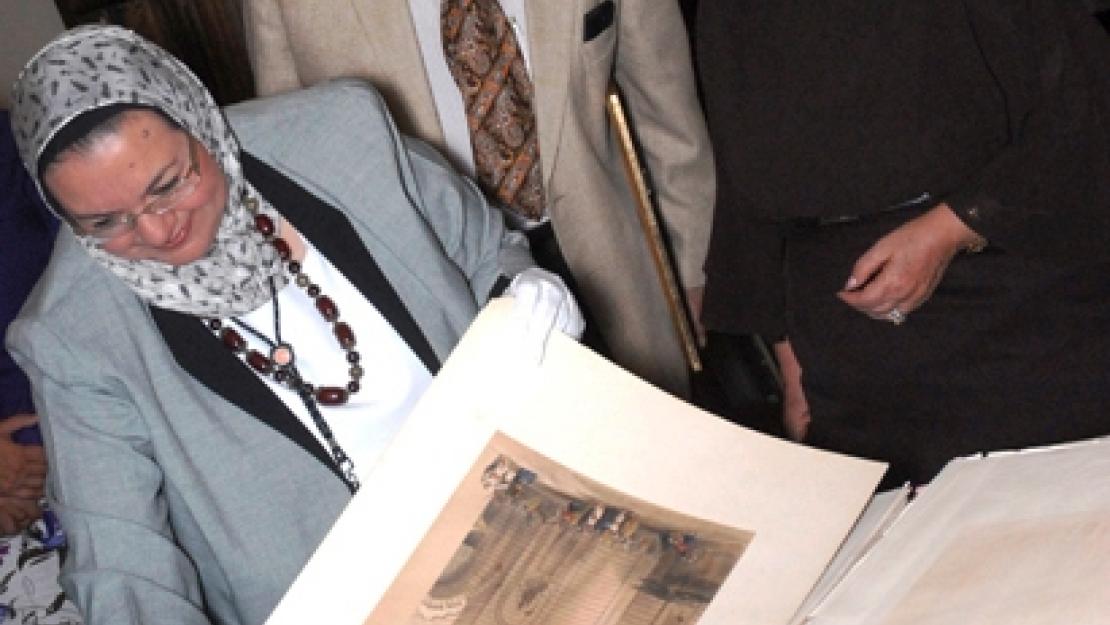
Surrounded by great monuments, scholars and researchers studying in Cairo have an unparalleled opportunity to unveil the creativity of Islamic art and architecture. Impassioned by the significance of this dynamic field, Nadia Niazi Mostafa, friend of the University and parent of an AUC alum, has been supporting the study of Islamic art and architecture at AUC for more than a decade.
Mostafa’s love for Islamic art and architecture began in the early 1980s when she took classes in the field. In 1999, she established the Nadia Niazi Mostafa Endowed Award in Islamic Art and Architecture, presented to the winner of the best term paper or thesis. In the same year, she provided humidifiers for the climate-controlled rooms in the Rare Books and Special Collections Library (RBSCL), which preserve documents and antiquities that date back more than 100 years.
In 2001, Mostafa established the Nadia Niazi Mostafa Fellowship in Islamic Art and Architecture, awarded to an Egyptian student enrolled in the graduate program of the Department of Arab and Islamic Civilizations. The award is based on academic standing and financial need. “All students need support,” said Mostafa. “I know a lot of educated parents who wish they could have sent their children to AUC, but could not afford to. When I was taking courses in Islamic art and architecture, the department barely had enough students to keep it going. Having an annual award for the best thesis and a graduate endowment will help attract students to pursue their master’s degree in Islamic art and architecture, which is a very bountiful field that has not received the attention it deserves.” The fellowship has so far supported a total of 10 students.
Without this fellowship, Ahmad Abdel Aziz ’13 would have had to take a couple of semesters off to save money to pay University fees. “It [the fellowship] literally helped me continue the MA program. allowing me to expand my studies further in art and architecture," said Abdel Aziz. "The moment I got the fellowship, I felt like it is the first step of a dream coming true. AUC, by all means, offers the best education in Egypt. It is known for the education and social life it provides that enhances the personal and intellectual skills of students.”
Students enrolled in the Islamic art and architecture program have the advantage of working in RBSCL, which incorporates the holdings of the former Creswell library — one of the finest collections on Islamic art and architecture in the world. In further support for the preservation and conservation of Egypt’s intellectual and cultural heritage, Mostafa named the Nadia N. Mostafa Room in RBSCL on the New Cairo campus. The multipurpose room is used for specialized instruction, as well as for public seminars and lectures. According to Philip Croom, associate dean and director of RBSCL, “Professors in various fields and specifically Islamic art and architecture, which is our biggest area, come to this room to use our archival books that cannot be taken outside the library.” Additionally, it has hosted the inauguration of the Ramses Wissa Wassef exhibition titled, Ramses Wissa Wassef: The Architect and the Artist.
“The rare books and special collections at AUC are amongst the world’s most important collections,” said Mostafa, adding that these collections are a treasure and must be taken care of at all times. “Even if you can get enormous amounts of information on the Internet, they can't compete with the colored illustrations in a rare book, or the feel of the subject in a book.”
Mostafa believes that the time will come when all this wealth of information will be required, not only by museum curators, university lecturers, artists and decorators, but by novelists and playwrights. “There are thousands of historical novels written today about certain time periods in Western culture, but very few, if any, on the Arab and Muslim world. Hopefully, AUCians, with multi-languages, can help in providing writers and directors here and abroad with information on our rich heritage.”
In addition to Mostafa’s support for the arts, she has also been a steadfast supporter of the University through The AUC Annual Fund, which provides immediate funds to help sustain distinguished faculty members, support curricular innovation, maintain AUC facilities, as well as provide financial aid and scholarships.
Photo caption: Daad Abdel Razik, assistant director at the Rare Books and Special Collections Library; Ali Saleh, husband of Nadia Niazi Mostafa; and Nadia Niazi Mostafa

Scholars typically study modernity in Egypt in the 19th century, when Muhammad Ali, who is widely regarded as the founder of modern Egypt, made significant reforms in the military, economic, educational and cultural spheres. Less studied is what came before: the 18th century. Examining this period in Egyptian history, the Annual History Seminar, organized by the Department of Arab and Islamic Civilizations, will discuss the theme, “Before the Modern, After the Medieval: Egypt and the Middle East in the 18th Century.” The event will be held from March 28 to 29 in Oriental Hall, AUC Tahrir Square.
“Historians of Egypt have, for years, researched the events and transformations that occurred in the country throughout the 19th century,” said Amina Elbendary, assistant professor of Arab and Islamic civilizations. “And even though much debate has occurred over periodization, all concur that this century witnessed the transformation to modernity in Egypt and the Middle East in general. This year’s Annual History Seminar aims to study the 18th century in the history of Egypt — and other provinces of the Middle East/Ottoman Empire — from the perspective of early modernity and the late middle ages. It aims to ask the question of where it is that the 18th century fits in this narrative of the birth of the modern? Did Egypt in the 18th century belong to the medieval world? Or was it part of the early modern world?”
Participants include professors from AUC, Cairo University, Misr International University, New York University and France’s Centre national de la recherche scientifique. The papers to be presented discuss the 18-century transition to modernity in the Middle East through topics as diversified as diplomatic treaties of the late Mamluk period, intellectual history during the early modern period, changing city life, development of guild histories, changing concepts of time and the spread of clocks, literary developments and new genres, and intellectual interactions during the French occupation of Egypt.
Established in the early 1990s, the Annual History Seminar initially served graduate students at the Department of Arab and Islamic Civilizations, but has since expanded to include young historians from national universities throughout Egypt. The event also attracts European, American and Japanese scholars residing in Cairo who are keen on expanding their research and knowledge.
“During the two-day seminar, young scholars, often including graduate students, have a chance to present and receive feedback on their research, engage in discussions with faculty from various universities within Egypt and abroad, and expand their intellectual horizons,” said Elbendary. “The seminar encourages a multidisciplinary approach to the study of Egyptian and Arab history through a focus on literary analysis and revisions of social, economic and cultural histories.”
For the full program,click here. For inquiries, email [email protected].
Photo courtesy of the Rare Books and Special Collections Library and Archives
